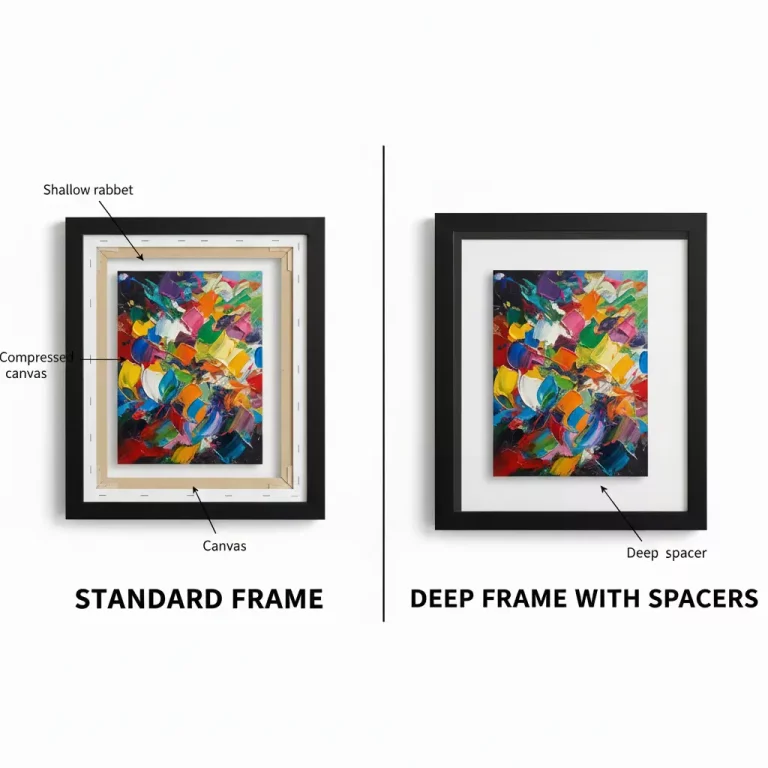Introduction
The success of a canvas painting often starts with what’s hidden beneath the paint: the canvas fabric itself. The age-old debate between cotton and linen canvases matters to painters at every level. Each fabric offers distinct advantages, and understanding them will help you make the best choice for your style, budget, and creative goals.
This guide breaks down the main differences between cotton and linen canvases so you can select the perfect foundation for your next masterpiece.
For essential supplies to get started, see The Essential Art Supplies List for Every Aspiring Painter.
Cotton Canvas: Affordable Versatility
Pros
- Cost-Effective: Cotton (often called “duck canvas”) is budget-friendly, making it perfect for beginners and bulk painting projects.
- Smooth Texture: Cotton weaves tend to be fine and smooth, giving crisp detail—ideal for precise brushwork and realism.
- Widely Available: Comes in pads, rolls, pre-stretched frames, and panels at most art stores.
- Lightweight: Easy to transport and hang, especially for large or oversized canvases.
Cons
- Less Durable: Cotton fibers are not as strong as linen and may sag or loosen over time—especially in humid climates.
- Absorbs Moisture More: More susceptible to environmental changes, which can warp or stretch the fabric.
- Not as Archival: Not preferred for high-value or legacy artwork intended to last generations.
Linen Canvas: Professional Durability
Pros
- Superior Strength: Linen fibers (from the flax plant) are longer, stronger, and naturally more resistant to stretching and warping.
- Archival Quality: Used by master painters for centuries—great for professional art and works you want to last a lifetime.
- Textured Surface: Linen typically has a natural, subtle weave for depth and painterly effects, especially in large, expressive pieces.
- Less Prone to Mold and Mildew: Withstands varying humidity better than cotton.
Cons
- Expensive: Linen canvases often cost significantly more than cotton equivalents.
- Less Forgiving: The texture can be rough for detailed or hyper-realistic styles; it can be harder to stretch without wrinkles.
- Limited Availability: Not as accessible as cotton in entry-level art shops or for custom sizes.
For painting techniques and inspiration, see The Ultimate Guide to Canvas Painting: Techniques, Materials, and Inspiration.
How to Choose: Key Considerations
- Budget: Cotton for affordable experimentation; linen for professional, long-lasting works.
- Painting Style: Detailed, smooth work = cotton; bold, textured, or large-scale pieces = linen.
- Longevity: For gallery, commission, or heirloom art, invest in linen.
- Format: Both fabrics are available as pre-stretched frames, panels, or unstretched rolls—choose the format that fits your workspace.
For even more types of canvas and creative inspiration, explore 20 Beautiful Canvas Painting Ideas to Inspire Your Next Creation.
Tips for Working with Canvas Fabric
- Always prime your surface with gesso to protect the fabric and enhance paint adhesion.
- Store finished and unused canvases in cool, dry environments, away from moisture.
- Use extra crossbars or bracing for large-scale works to maintain fabric tension.
If you’re unsure, test both fabrics on small panels before committing to larger projects.
Conclusion
Whether you choose cotton or linen canvas, understanding the fabric’s qualities will help you create art that’s beautiful and built to last. Start with what fits your style—and don’t be afraid to experiment as you expand your skills.
For more supplies comparisons, painting tutorials, and creative ideas, explore our full art and decor blog collection.





